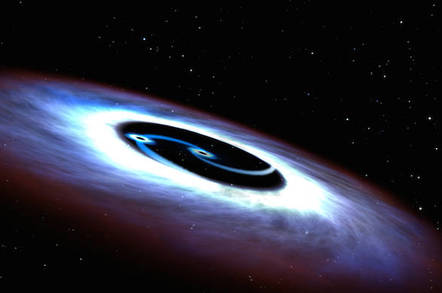Scientists have discovered the closest-ever supermassive black hole binary system. It's in the spiral galaxy NGC 7674, and the pair of voids are separated by a distance of less than one light year. Supermassive black hole binaries are rare. Until now, astronomers have only spotted one so far, about 24 light years apart. Finding two systems is important, as it provides more evidence that supermassive black holes collide in galaxies, and are the source of gravitational waves.
A paper published in Nature Astronomy on Tuesday shows that the black holes were found using a technique known as very long baseline interferometry, where data is collected by several radio telescopes simultaneously.

The researchers focused on the central region of NGC 7674 and detected two bulges at frequencies indicative of growing monstrous black holes. Preeti Kharb, co-author of the paper and a researcher at the Tata Institute of Fundamental Research, India, said:
“The two radio sources have properties that are known to be associated with massive black holes that are accreting gas, implying the presence of two black holes.”
The supermassive black holes have a whopping combined mass of about forty million times the mass of the Sun, and an orbital period of one hundred thousand years. Single gigantic black holes gorging on surrounding matter are believed to exist in the centers of most large galaxies. Scientists believed that since galaxies collide and merge, the black holes might become entangled together to become a binary system.
As they get closer and closer to one another, they cannot escape each other's gravity, and end up smashing into each other, sending gravitational waves rippling through spacetime. Three confirmed signals from these ripples have been detected by the Laser Interferometer Gravitational-wave Observatory since 2016.
